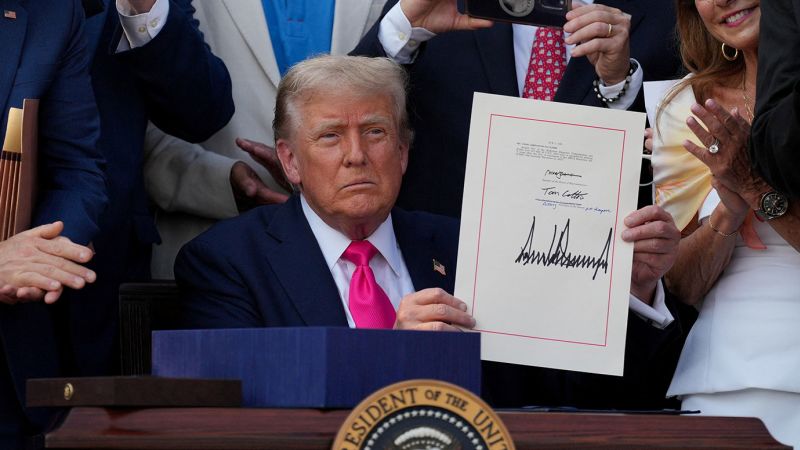New Tax Deduction for Car Loans: What You Need to Know

The recent tax reform bill, signed into law by President Donald Trump, introduces a temporary income tax deduction for interest paid on loans used to finance the purchase of qualified passenger vehicles. This provision applies to purchases made between 2025 and 2028 and is designed to encourage consumer spending in the automotive sector. However, eligibility is limited based on the type of vehicle, loan, and borrower income.
Defining Qualified Vehicles and Loans
To qualify for this deduction, the vehicle must be intended for personal use only. This includes a range of options such as cars, motorcycles, minivans, vans, sport utility vehicles, and pickup trucks. According to David Mellem, an enrolled agent at Ashwaubenon Tax Professionals in Wisconsin, the deduction does not extend to vehicles used for business or commercial purposes.
Further conditions specify that only new vehicles are eligible for the deduction. The law states that the vehicle’s “original use” must commence with the taxpayer, which raises questions about showroom models that might have been used by dealership employees. Additionally, to qualify, the vehicle must have undergone its final assembly in the United States. Mellem suggests that dealerships may need to provide certification or documentation to confirm this requirement.
Certain vehicles are explicitly excluded from eligibility. For instance, unicycles and golf carts do not qualify, as the law stipulates that vehicles must have at least two wheels and be manufactured for use on public streets, roads, and highways.
Who Can Benefit from the Deduction?
Not every loan used to finance a vehicle will qualify for the deduction. Loans from family or friends are ineligible, as are loans for vehicles intended for parts or lease agreements. However, taxpayers may deduct interest on refinanced loans for personal vehicles, provided the original lender retains the first lien.
The tax deduction will be available to all eligible vehicle buyers, regardless of whether they choose to itemize deductions or take the standard deduction. The maximum deduction is capped at $10,000 per year. However, eligibility for the full deduction is further limited for individuals whose modified adjusted gross income (MAGI) exceeds $100,000 ($200,000 for married couples filing jointly). For every $1,000 over these thresholds, the deduction decreases by $200. Consequently, individuals with a MAGI above $149,000 ($249,000 for joint filers) will not qualify for any interest deduction.
Lower-income taxpayers may find themselves unable to benefit from this deduction, as they may not have sufficient tax liability against which to apply it.
Estimating the Deduction’s Value
The value of the deduction can significantly impact tax bills, reducing them based on the taxpayer’s highest tax rate. For instance, if an individual is in the 12% tax bracket, a $100 deduction translates to a $12 reduction in federal income tax. In the 22% tax bracket, a $100 deduction reduces the tax bill by $22. Given the limitations imposed by the new deduction, Mellem anticipates that few taxpayers in higher tax brackets will fully benefit.
According to data from Edmunds.com, the average total interest paid over the life of a new vehicle loan is approximately $9,851, with an average loan term of 69.5 months. While the maximum deduction could potentially save taxpayers up to $2,200 if they qualify for the full interest deduction, many may not reach this maximum amount.
The potential impact of tariffs on vehicle prices may also influence the effectiveness of the deduction. Although price increases have not yet fully materialized, the Institute on Taxation and Economic Policy estimates that a 5% increase in vehicle prices could reduce the value of the deduction by about 25% for single filers earning $63,475 or less and joint filers earning $126,950 or less. At all eligible income levels, the deduction would likely fail to offset even a 3% price increase due to tariffs.
As taxpayers prepare for the upcoming changes, understanding the nuances of this new tax provision will be crucial for maximizing potential benefits in the coming years.






